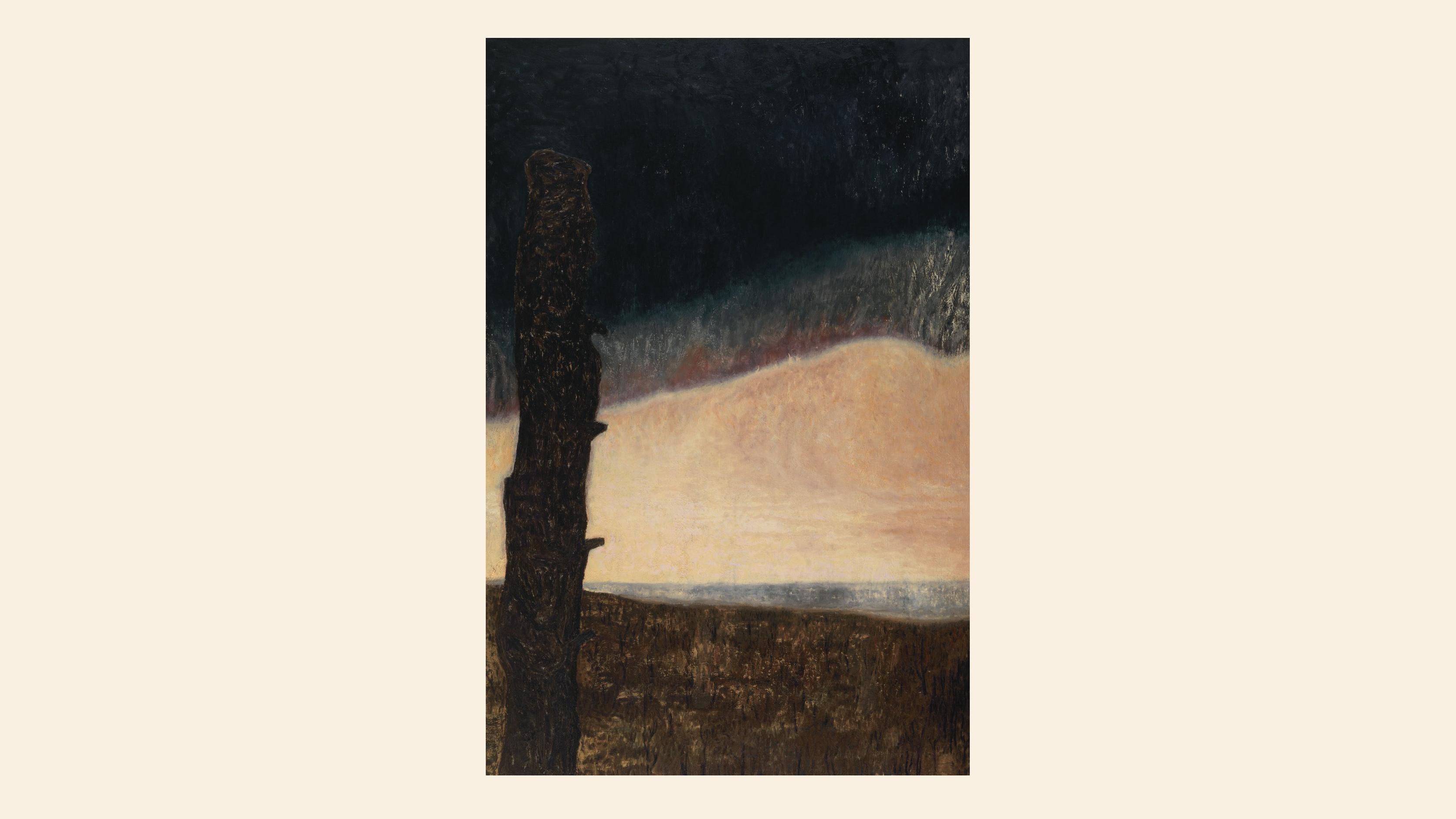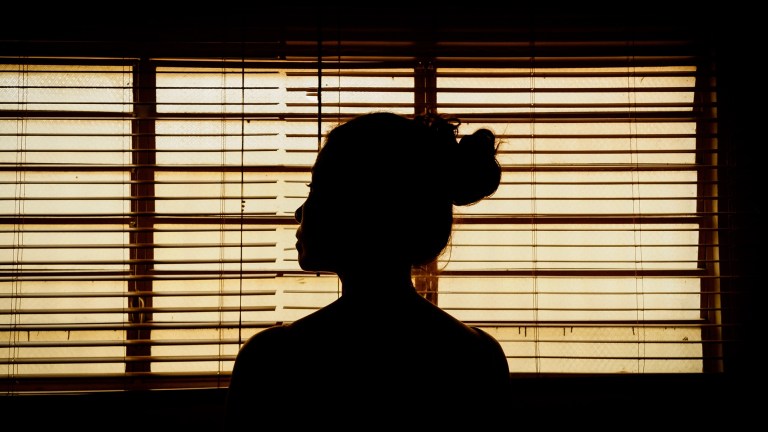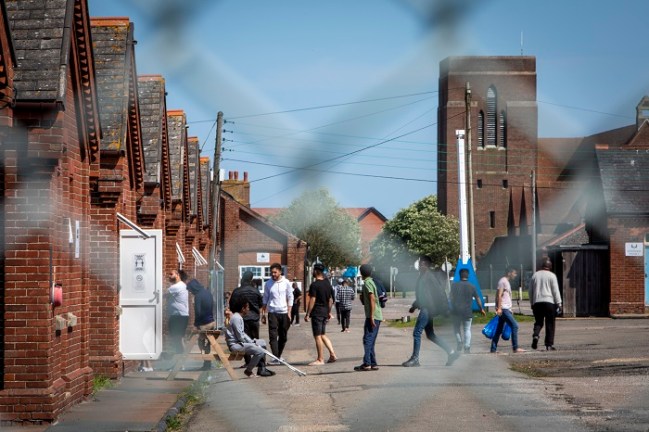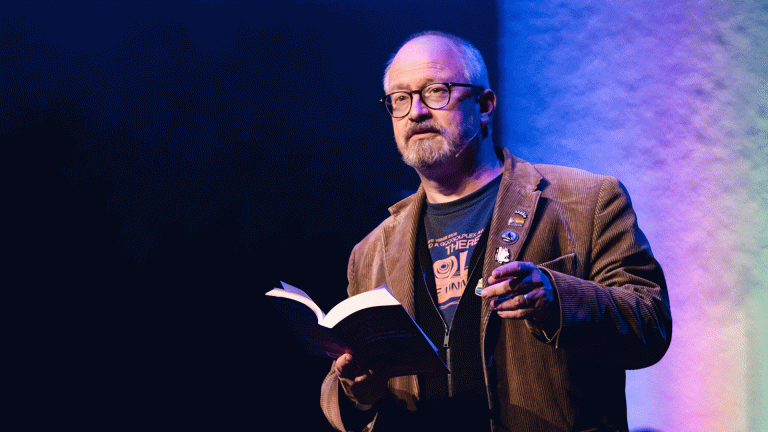Certainly the three painters represented were showing bits of nature. But were they not more about human life than that about nature? Nature painting you would imagine would be exclusively about views of nature, not human constructions in nature.
But the Gauguin is of a farm, with a peasant and a dog and a farm building. Camp Forestia (Care Taker) by Peter Doig is of a white cabin on the edge of water and reflected in the water. Its brilliant but it’s not actually nature, though it is set in nature. Mamma Andersson’s Stubbornly Waiting is a tree severely trimmed almost to a stump, not looking very natural in a bleak backdrop of nature.
So the enigma of why such a small collection of paintings is added to by the enigma of the exhibition’s name. But I can live with that, because more than anything these days I need creative enigma. Our life and times are full of enigmas. Life increasingly seems to be a trail of unsolvable enigmas. Trump and the destruction of much of human life by smartphones, to name but two.
I have known Peter Doig’s work for a few decades and have always been astonished by its handling of what it describes. The first painting I saw by him that stuck with me was a majestic painting of a block of flats. It made me look at those ’70s social housing towers in a new way. It did not make it easier for me to enjoy the endless balconies and the conformity of them all. But Doig removed a kind of mist that I felt had been laid over the blocks by their constant familiarity.
Camp Forestia is drenched in simplicity. Bold and beautiful and full of a kind of blurry, slightly out of focus detail. But everywhere you look something is happening. You might even want to view it as an abstract, as flat pieces of painting describing water and land and grass.
Stubbornly Waiting by Mamma Andersson is a large work that seems almost to not have a subject. It lacks ‘centralness’, is how I would, stumblingly, describe it. What is the subject, I ask? It reminds me of a painting of a tree I once did with a bland background, and I struggled to complete it because it looked as if it was waiting for something to be added. Some people, or a house, or something. Maybe even a dog.
Unlike the Gauguin in the show, or Doig’s cabin by the waterside, with reflection as big as the cabin, Stubbornly Waiting seems vacant. Large and empty.
Or is it? A stumpy-looking tree, a greyish white-to-dark background, and perhaps a whiteish hill? I was intrigued by it because whatever the artist was up to, it really worked. Even the title seemed to ring true.
I left the gallery confused and slightly dazed as to what the exhibition was about. But I felt I had been in the presence of something that was more than simply the collected and displayed paintings. There was a sense of peacefulness. And making me look at nature again. Or take the words of Gauguin, quoted in the exhibition: “I let myself live in the mute contemplation of nature which provides me the whole of art.” Yes, that kind of says it all.
Pity they closed Savile Row police station, often called West End Central. As a 15-year-old I spent the night there in a cell with about 30 other men, after a nuclear disarmament demonstration in Trafalgar Square. Breakfast was two Danish pastries and two cups of tea. The coppers were kind. There’s nothing like a kind copper.
John Bird is the founder and editor-in-chief of The Big Issue. Read more of his words here.
Do you have a story to tell or opinions to share about this? We want to hear from you. Get in touch and tell us more
This article is taken from The Big Issue magazine, which exists to give homeless, long-term unemployed and marginalised people the opportunity to earn an income. To support our work buy a copy!
If you cannot reach your local vendor, you can still click HERE to subscribe to The Big Issue or give a gift subscription. You can also purchase one-off issues from The Big Issue Shop or The Big Issue app, available now from the App Store or Google Play









